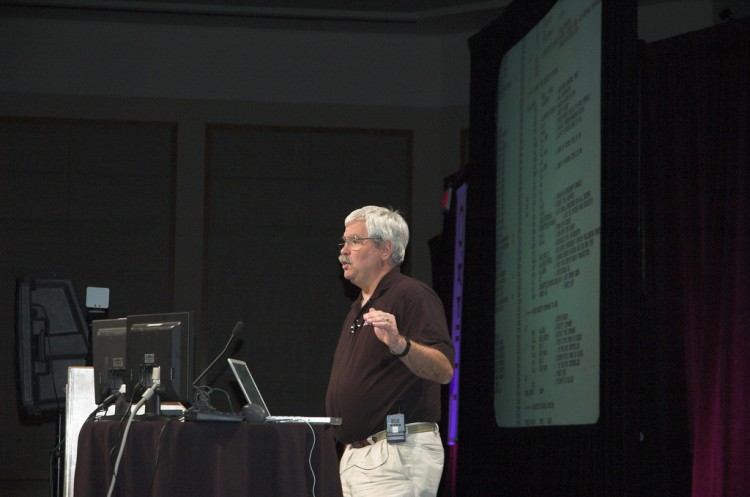David Bradley
|
David Bradley
David Bradley (engineer) David Bradley was one of the twelve engineers who worked on the original IBM PC, developing the computer ROM BIOScode. He is credited by some[who?] for inventing the "Control-Alt-Delete" key combination that was used to reboot the computer. Bradley did not intend Control-Alt-Delete to be used by end users — it was meant to be used by people writing programs or documentation, so that they could reboot their computers without powering them down. This was useful since after a computer was powered down, it was necessary to wait a few seconds before powering it up again to avoid potential damage to the power supply. Since software developers and technical writers would need to restart a computer many times, this key combination was a big time-saver. Bradley chose this key combination because it is practically impossible to accidentally press this combination of keys on a standard keyboard. However, the key combination was revealed to the public when developers found it useful, and at the 20th anniversary of the IBM PC, while on a panel with Bill Gates, Bradley said "I may have invented it (control-alt-delete), but I think Bill Gates made it famous". According to another account, the man responsible for selecting Control-Alt-Delete was Michael Donald Wise. He selected that combination of keys in 1975 as he built the first true PC, Sphere 1, which predated the IBM PC by six years.
Bradley is the author of Assembly Language Programming for the IBM Personal Computer (Simon & Schuster, ISBN 0-13-049171-3, January 1984), also released in French as Assembleur sur IBM PC (Dunod, ISBN 2-225-80695-0), Russian ("Radio" Publishing House, Moscow), and Bulgarian ("Technica" Publishing house, 1989). Bradley holds seven U.S. patents. Bradley has been adjunct professor of electrical and computer engineering at Florida Atlantic and at North Carolina State University. Much of Bradley's career has been at IBM. Bradley began at IBM after receiving a PhD from Purdue in 1975. He worked on the Series/1 system. In 1978 he developed the I/O system for the System/23 Datamaster. In 1980 Bradley was one of twelve engineers developing the first IBM Personal Computer. Bradley developed the ROM BIOS. That got him promoted to manage the BIOS and diagnostics for the IBM PC XT. In 1983 Bradley formed the Personal Systems Architecture Department. In 1984 he helped manage development of the Personal System 2 Model 30. In November 1987 Bradley became manager of advanced processor design. His group developed the 486/25 Power Platform and the PS/2 Models 90 and 95. In 1991 he became manager of systems architecture for the Entry Systems Technology group. In 1992 he became the architecture manager for the group that developed a personal computer using the PowerPC RISC microprocessor.[4] In 1993 he returned to be the manager of architecture in the PC group. On January 30, 2004, Bradley retired from IBM. From Wikipedia, the free encyclopedia
|
|










